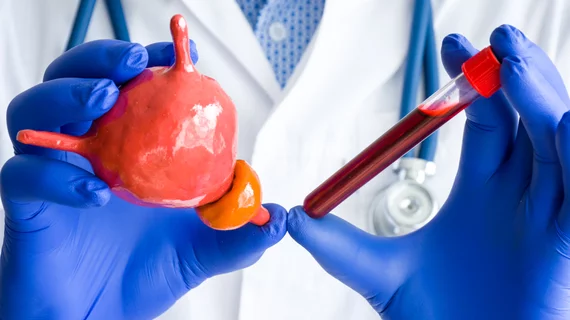Payment incentives fail to push physicians toward MRI surveillance of low-risk prostate cancer
Payment incentives provided by a commercial insurer failed to push physicians toward MRI surveillance of low-risk prostate cancer, according to new research published Wednesday.
Clinical guidelines call for this less aggressive approach, allowing men to postpone radiation therapy or other treatment to avoid side effects such as urinary incontinence or erectile dysfunction. However, use of such “active surveillance” varies, as up to 40% of men with low-risk cancer undergo immediate treatment, experts write in JAMA Network Open.
Blue Cross Blue Shield of Michigan has sought to change these numbers, offering a payment incentive to encourage urologists against inappropriately aggressive treatment. While active surveillance increased during the six-year study period, the pay perk was not associated with this shift, researchers concluded.
“To align prostate cancer care quality with payment more reliably, sharper policies that reduce barriers to active surveillance (e.g., elimination of prior authorization for imaging) or directly bring reimbursement parity between management strategies may prove more effective,” Arnav Srivastava, MD, a urologic oncology fellow with the University of Michigan, and co-authors wrote Jan. 8. “Such policies may encourage adoption of conservative management by mitigating the financial incentives surrounding immediate treatment.”
The study utilized data from the Michigan Urological Surgery Improvement Collaborative (MUSIC), a statewide quality-improvement cooperative of practicing specialists, spanning 2015-2021. Eligible participants were men with newly diagnosed low- or intermediate-risk prostate cancer who were eligible for active surveillance. The BCBS incentive was established between 2017 to 2018; upon meeting the target—at least 72% of men with low-risk disease considered or initiated surveillance—the health insurer would provide “enhanced” reimbursement.
Srivastava and colleagues pinpointed over 15,000 patients meeting the criteria, of whom more than 10,000 (68.5%) had low-risk prostate cancer. The percentage of men electing for surveillance increased from 54.4% in 2015 up to 84.1% in 2021. However, the payment incentive was not associated with increased use of surveillance (odds ratio, 0.96) during its application.
“Urologist recommendation often drives a patient’s decision between active surveillance and primary treatment,” the authors noted. “Physicians may make thousands of dollars more in the first year ($1,711.80 to $2740.40 per Medicare beneficiary) through primary treatment as opposed to active surveillance. Consequently, financial incentives embedded in payment policy may influence management toward primary treatment.”
“Our work suggests that, to be impactful, payer-directed incentives to improve quality must account for preexisting financial considerations and practice patterns that physicians face,” Srivastava and colleagues added later in the study’s conclusion.

